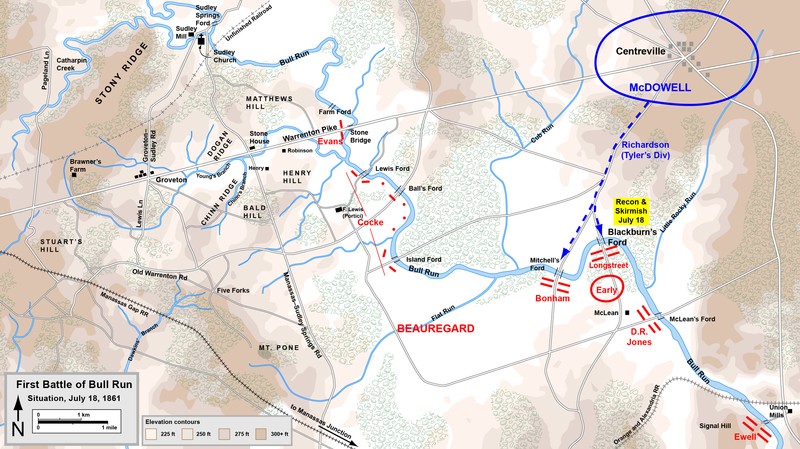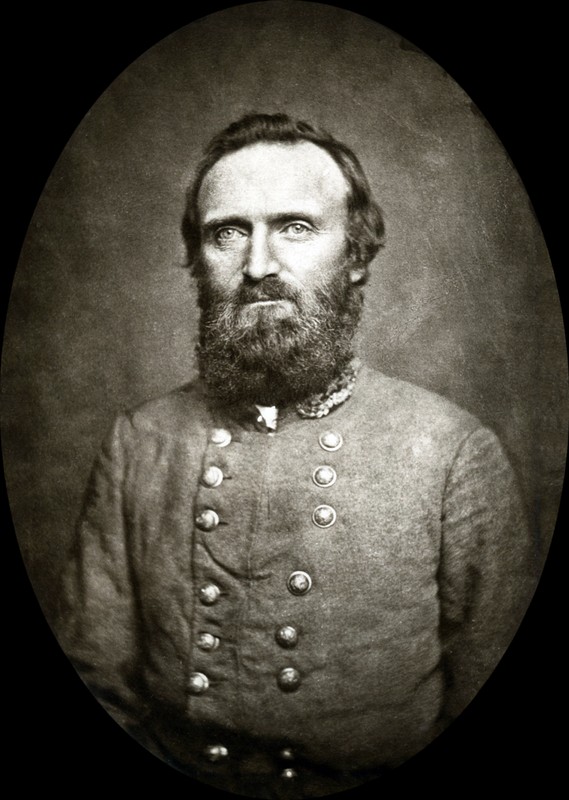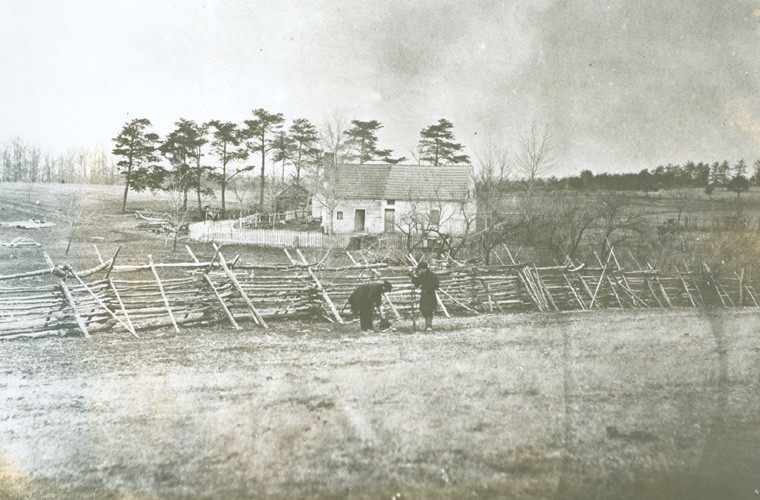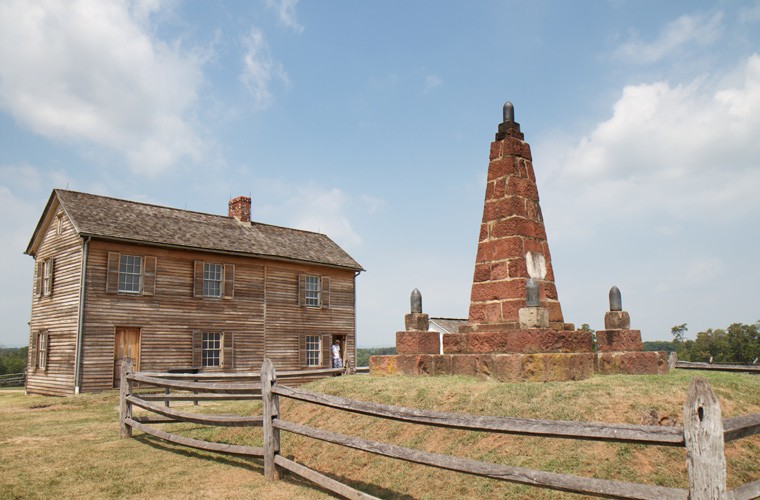First Battle of Bull Run
Introduction
Text-to-speech Audio
The Battle of Bull Run, also known as the Battle of First Manassas, occurred on July 21, 1861. It was the first major battle in the Civil War, and in this monumental battle, two poorly trained forces were against each other. Although the Union's initial attack put the Confederates at a disadvantage, Confederate reinforcements arrived from the Shenandoah Valley and turned the tide. The result was a Confederate victory and a disastrous Union rout. The bloody battle was a sobering realization to many that war would not end quickly, as previously speculated.
Images
Map of the migration of troops from the First Battle of Bull Run.

Artistic recreation of the Battle - compare with what you see in front of you!

Confederate general Thomas J. "Stonewall" Jackson

Rare wartime photograph showing the Matthews House on the battlefield

The reconstructed Henry House and Bull Run Monument

Backstory and Context
Text-to-speech Audio
At the beginning of the Civil War, many in the northern states pushed for a march on Richmond, the Confederate capital, hoping to bring a swift end to the rebellion. In fact, people from the north followed the soldiers to Bull Run with picnics, hoping to watch a colorful engagement from a nearby hill.
Union General McDowell was wary about this sort of action, as his men were inexperienced and green, just like the Confederate forces. Intense political pressure eventually pushed McDowell to march into action, against his better judgement. He set out with a large force of 35,000 men, hoping to send two columnns to attack the Confederate line of Bull Run to occupy their attention. His plan was to then send the third columnn to the rear of the Confederate line, cutting off their supply line to Richmond. McDowell's plan was designed to force a Confederate retreat and relieve some pressure on the Capital.
This plan, however, was poorly executed by McDowell's subordinate officers; they took too long positioning themselves. The surprise flank attack was nonetheless effective, putting the Confederate forces into dire straits. The time it took the Union troops to position themselves became troublesome, as it allowed Confederate reinforcements to arrive by rail. These reinforcements were fresh. They did not have to march a great distance to the battlefield and had not been involved in the pitched combat.
The arrival of Confederate General Johnston from the Shenandoah Valley quickly turned the tide of the battle. It was at this point Stonewall Jackson and his famous brigade held the line (it was here he earned his nickname). Morever, during Stonewall's attack on Henry House Hill, the charging Confederates led out terrifying high pitched battle cries, which later became known as the "rebel yell."
The Confederate counterattack was strong and forced a Union retreat. Due to the inexperience of the soldiers, however, this retreat quickly turned into a disastrous and disorganized rout. The resulting bloody Confederate victory was a clear sign to many that the war would not end quickly, as was popular notion.
Union General McDowell was wary about this sort of action, as his men were inexperienced and green, just like the Confederate forces. Intense political pressure eventually pushed McDowell to march into action, against his better judgement. He set out with a large force of 35,000 men, hoping to send two columnns to attack the Confederate line of Bull Run to occupy their attention. His plan was to then send the third columnn to the rear of the Confederate line, cutting off their supply line to Richmond. McDowell's plan was designed to force a Confederate retreat and relieve some pressure on the Capital.
This plan, however, was poorly executed by McDowell's subordinate officers; they took too long positioning themselves. The surprise flank attack was nonetheless effective, putting the Confederate forces into dire straits. The time it took the Union troops to position themselves became troublesome, as it allowed Confederate reinforcements to arrive by rail. These reinforcements were fresh. They did not have to march a great distance to the battlefield and had not been involved in the pitched combat.
The arrival of Confederate General Johnston from the Shenandoah Valley quickly turned the tide of the battle. It was at this point Stonewall Jackson and his famous brigade held the line (it was here he earned his nickname). Morever, during Stonewall's attack on Henry House Hill, the charging Confederates led out terrifying high pitched battle cries, which later became known as the "rebel yell."
The Confederate counterattack was strong and forced a Union retreat. Due to the inexperience of the soldiers, however, this retreat quickly turned into a disastrous and disorganized rout. The resulting bloody Confederate victory was a clear sign to many that the war would not end quickly, as was popular notion.
Sources
http://www.civilwar.org/battlefields/bullrun.html
http://www.history.com/topics/american-civil-war/first-battle-of-bull-run
http://www.nps.gov/mana/historyculture/first-manassas.htm
